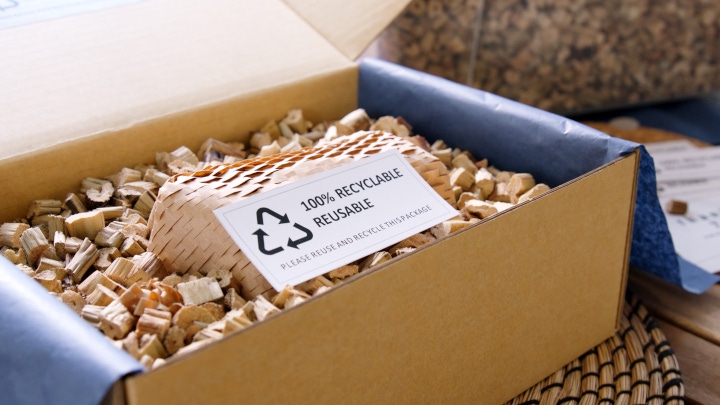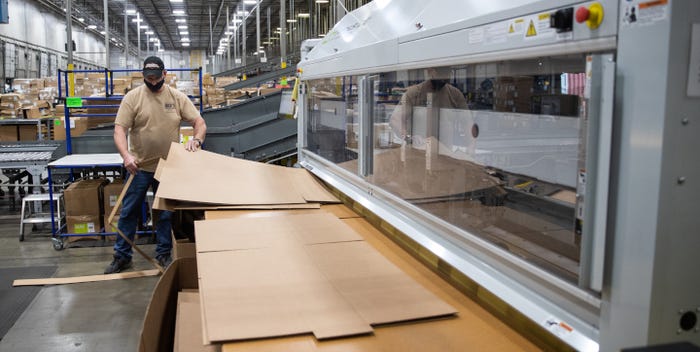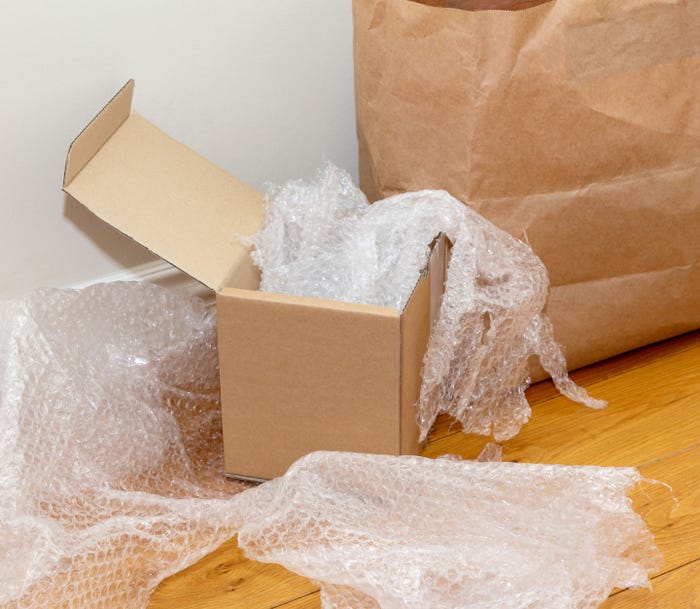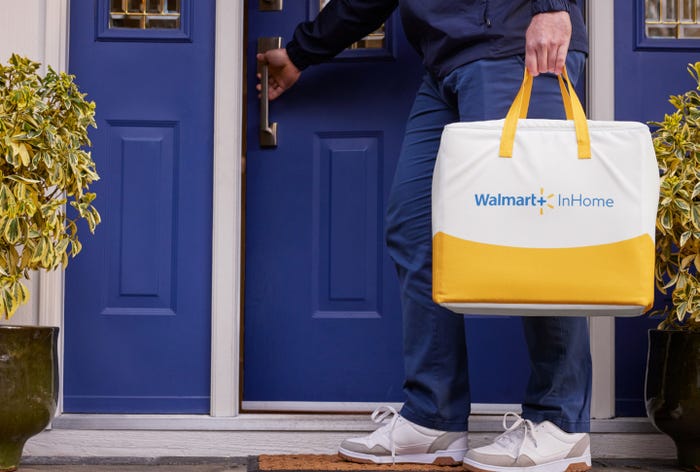Supply Chain Prioritizes Sustainability
Shipping expert identifies three continuing trends in packaging, along with a fourth surprising one.

At a Glance
- Major ecommerce retailers continue sustainable packaging initiatives
- Shift towards circular economy and plastic reduction
- Adoption of right-sized, automated packaging
Last year may well have been a turning point in environmental sustainability across our country on both the consumer and corporate levels. The Inflation Reduction Act (IRA) was instituted with many provisions to support the transition to sustainable energy, and, according to an August 2023 McKinsey & Co. report, consumer awareness and concern about packaging sustainability continues to grow.
The biggest ecommerce companies, such as Amazon and big box retailers, have worked hard to demonstrate they’re taking packaging waste and environmental impact seriously, with initiatives from ending the use of plastic padded mailers to experimenting with not using boxes in the shipping process.
The pressure to provide more sustainable options and meet regulatory compliance while maintaining or improving operations, costs, and revenue will only increase this year, as the European Union’s (EU) Corporate Sustainability Reporting Directive takes effect. Additional policies in the US will continue to come into play as well, such as state-by-state laws penalizing the shipment of wasteful packaging.
Companies are looking to genuinely solve the negative environmental impacts of shipping and packaging to help meet Environmental, Social and Governance (ESG) initiatives for themselves, their partners, and their customers. This must be balanced with determining the next best steps to retain consumer loyalty while improving operations and reducing carbon emissions.
Based on my experience in the industry, I recommend looking to the consumer to inform the sustainability path forward, instead of implementing new processes and concepts that may not work for the individuals opening that package at the end of its journey.
Here are four primary trends I foresee continuing throughout 2024 in the packaging sector.

Packsize International
1. Right-sized, automated packaging.
The increased recycled content in corrugated packaging is laudable and important to reduce an operation’s overall carbon footprint. However, some companies have lagged on reducing packaging size, whether due to a lack of technical capability or a lack of understanding about the importance of reducing landfills and effectively communicating to consumers that recycling and waste reduction is a priority.
All the marketing in the world about a manufacturer or retailer taking responsibility for environmental stewardship will dissolve in the face of a customer opening their package and finding relatively small items in a pre-fabricated, oversized box that is then stuffed with plastic packing materials and cannot easily be disposed of or recycled.
2024 will see a much wider adoption of right-sized, automated packaging solutions being onboarded, especially with major retailers and e commerce companies. These technologies create on-demand boxes with the right dimensions for each order created on the warehouse line. Right-sizing lessens waste, improves the customer experience, and significantly reduces cost.

Akintevs / iStock via Getty Images Plus
2. Plastics and the circular economy.
The Center for International Environmental Law predicts that by 2030, plastic emissions of greenhouse gasses could reach up to 1.34 gigatons per year. We’ve already seen steps being taken toward reducing the amount of plastic filler in shipped packages and the replacement of plastic fillers with recyclable alternatives in the enterprise. The urgency to remove plastics will continue, but we will also see options being provided for the plastic fillers that are already in circulation and cannot be easily recycled.
Awareness of the circular economy, which employs the reuse and recycling of products and materials to minimize waste, is growing both at the corporate level and among the general public. As a result, we’ll see multiple-use packaging options being offered to consumers.
For example, plastic fillers could be more deliberately designed to be useful for a consumer to use for their own shipping needs, or companies could offer options for the filler to be sent back at no cost to the original recipient. Then it could be repurposed on the company’s end. Similar options may also become more available for the packaging itself.
3. Lightweighting.
Well-designed and tested lighter-weight corrugated packaging can substitute for things like plastic mailers and also reduce the overall weight of corrugated boxes. Major ecommerce companies and big-box stores are already starting to investigate lightweighting options.
Lightweighting is the use of lighter-weight packaging materials for box construction to create greater savings and minimize the use of heavier, more environmentally impactful corrugate. Like right-sizing, light weighting can reduce overall packaging weight, which results in more packages per truck and a meaningful lessening of the number of trucks on the road and the amount of fuel used.
But light weighting should be managed thoughtfully, considering what is being shipped, how it might be stacked or packed, and how far it will need to travel. The goal is to find the sweet spot where the items in each package remain intact, and the package remains secure while the packaging itself is substantively reduced.

Walmart
4. Experimentation.
We’ve already seen some organizations experiment with SIOC (Ship in Own Container) to determine what packages can be sent safely without exterior packaging. An item shipped without the addition of an external box is appealing from an environmental perspective, and some packages can adapt to this process if, for example, they have strong original packaging or are soft items that can be stacked in a box during the shipping process without damage.
There will still be logistical issues that need to be resolved before this method takes off in a big way. It can be difficult from a practitioner standpoint to handle multiple items from multiple warehouses in a single order without using an external package. But we’ll see retailers working creatively to solve this problem throughout the coming year.
One possible outcome could be a move toward different approaches to actual delivery. Retailers could move toward offering more diverse customer choices, such as having their private fleet contracted employees leave items inside a garage, or inside the house. This is currently offered by some major retailers such as Walmart’s “InHome” delivery service and Amazon Key in Garage Delivery. These kinds of offerings could aid in the transition to no-boxing alternatives and create additional revenue streams for purveyors as add-ons to customer orders. But secondary packaging will always be needed for most orders.
About the Author(s)
You May Also Like




